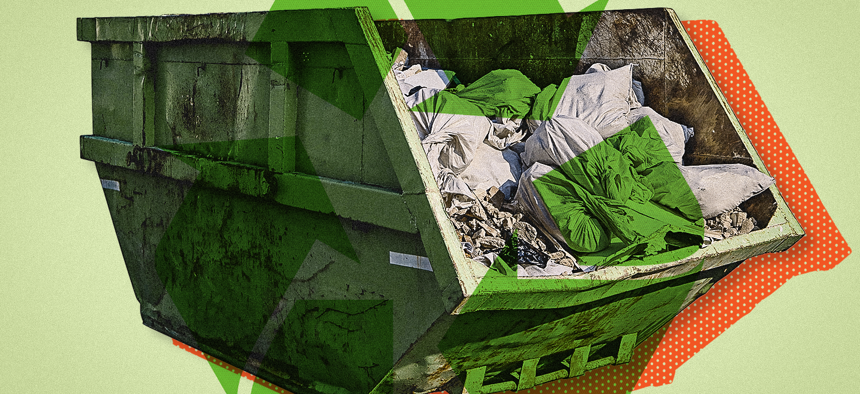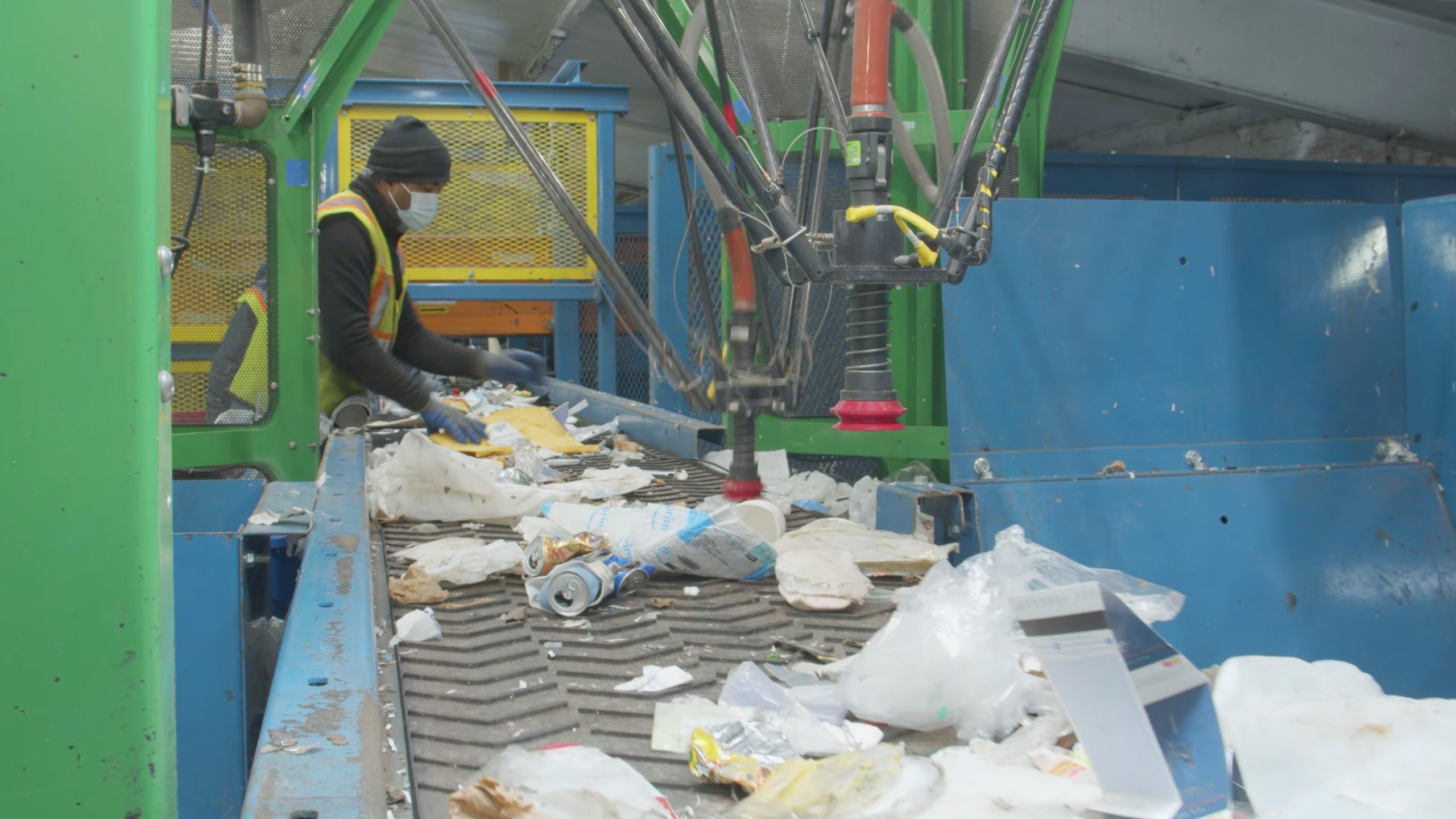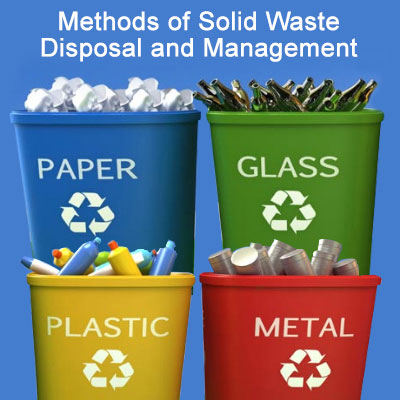Exploring Different Kinds Of Waste in Modern Waste Monitoring Equipment
The contemporary landscape of waste management involves navigating a complex range of waste kinds, each calling for specialized handling and disposal methods to alleviate environmental effects. Municipal strong waste, hazardous waste, electronic waste, and natural waste each existing distinct obstacles and chances for resource recuperation.
Local Solid Waste
Community solid waste, often referred to as home garbage or trash, incorporates a variety of disposed of products generated by residential, commercial, and institutional resources within a community. This waste stream usually consists of items such as packaging, food scraps, yard trimmings, paper, plastics, textiles, and thrown out house items. The monitoring of municipal strong waste is an essential part of city preparation and public wellness, necessitating efficient collection, transport, and disposal systems.
Effective waste monitoring systems are developed to decrease environmental impact while taking full advantage of resource recovery. This commonly includes a mix of strategies including composting, recycling, and landfilling. Reusing programs target products like paper, glass, steels, and certain plastics, diverting them from land fills and reestablishing them right into the manufacturing cycle. Composting organic waste, such as food scraps and backyard trimmings, not just decreases garbage dump use however likewise produces beneficial soil changes.
Municipalities have to additionally resolve the financial and logistical obstacles linked with waste administration. Executing pay-as-you-throw systems, boosting public understanding, and investing in innovation can significantly enhance waste diversion rates. By integrating these practices, towns can promote lasting areas, reduce greenhouse gas exhausts, and save natural deposits.
Contaminated Materials

Effective contaminated materials management entails several critical steps: recognition, disposal, partition, and therapy. Identification entails the classification of waste based on its dangerous homes. Segregation ensures that hazardous products are stored separately from non-hazardous waste to prevent cross-contamination. Therapy techniques, such as chemical neutralization, incineration, and stabilization, are employed to decrease the poisoning, volume, or wheelchair of the waste. Lastly, disposal choices, consisting of secure garbage dumps and underground storage space, are selected to make certain long-lasting containment.
Governing structures, such as the Source Preservation and Healing Act (RCRA) in the United States, offer guidelines and requirements for harmful waste monitoring. Adherence to these policies, coupled with innovations in waste treatment technologies, is important in minimizing the dangers linked with contaminated materials.
Digital Waste
Digital waste, frequently described as e-waste, represents a swiftly growing challenge in waste monitoring systems around the world. This sort of waste includes thrown out electronic gadgets and equipment such as smartphones, computers, televisions, and other electronic appliances. The quick speed of technological development, combined with reducing product life-spans and customer demand for the most up to date devices, has actually greatly boosted the volume of e-waste generated yearly.
E-waste is especially bothersome due to its complicated structure, frequently having harmful substances like lead, mercury, and cadmium, which position significant ecological and wellness risks if not effectively taken care of. Alternatively, e-waste also consists of valuable products such as pop over here copper, gold, and silver, which can be recuperated and reused. The dual nature of e-waste-- both useful and hazardous-- requires specific handling, reusing, and disposal processes.
Efficient e-waste administration includes rigorous regulatory frameworks, robust collection systems, and advanced reusing modern technologies. Public recognition and participation are essential, as incorrect disposal practices, such as illegal dumping and informal recycling, worsen ecological contamination and carcinogen. As a result, boosting e-waste management methods is essential for alleviating ecological impact and recuperating important sources in an increasingly digital globe.

Organic Waste
Organic waste, comprising cooking area scraps, lawn trimmings, and agricultural residues, represents a significant part of the global waste stream. This kind of waste is biodegradable, suggesting it can be broken down by microbes into easier natural substances. Regardless of its capacity for all-natural disintegration, improper management of organic waste can result in damaging environmental influences, consisting of the discharge of greenhouse gases such as methane, which contribute to environment adjustment.
Effective administration of natural waste is essential for decreasing these environmental influences (recycling lives services). Composting is a widely taken on method, transforming natural waste into nutrient-rich compost that can improve dirt health and farming efficiency. Furthermore, anaerobic food digestion is an emerging technology that transforms organic waste into biogas, a renewable power resource, and digestate, which can be used as fertilizer
Municipalities and waste administration entities need to execute durable organic waste collection and therapy programs to make best use of the benefits of these procedures. Public education and learning campaigns can also play More Bonuses a crucial duty in motivating households and organizations to separate organic waste from other kinds of waste. By focusing on the management of natural waste, cultures can lower land fill use, reduced greenhouse gas discharges, and produce useful results for farming use.

Innovative Waste Administration
In the world of waste administration, ingenious techniques are transforming exactly how cultures manage their refuse, aiming for sustainability and efficiency. These advancements include a variety of modern technologies and techniques that enhance recycling rates, lower land fill reliance, and reduced ecological effect. One noticeable technology is the implementation of wise waste bins furnished with sensing units that monitor fill levels and optimize collection courses. This not only reduces gas usage yet likewise reduces greenhouse gas discharges.
One more significant development is the fostering of waste-to-energy (WtE) innovations. By converting non-recyclable waste into useful power with processes such as incineration and anaerobic food digestion, WtE decreases garbage dump problem and supplies a renewable resource resource. Improvements in chemical recycling permit for the malfunction of complex plastics right into their original monomers, allowing the creation of new, premium plastic products.
Furthermore, the circular economy design is acquiring grip, highlighting the design of items and systems that focus on reusability and source efficiency. This holistic strategy motivates sectors to lessen waste generation from the start. With these innovative strategies, modern waste monitoring systems are not only attending to the prompt difficulties of garbage disposal yet likewise leading the way for a much more sustainable future.
Final Thought
A thorough understanding of local strong waste, contaminated materials, electronic waste, and organic waste, combined with the implementation of cutting-edge waste administration services, is crucial for minimizing ecological impacts. Integrating innovations such as clever waste bins and waste-to-energy systems can improve effectiveness and sustainability. Efficient waste administration strategies not just foster resource healing yet also advertise public awareness and participation, ultimately contributing to the growth of a circular economy.
The modern landscape of waste management includes these details browsing an intricate selection of waste kinds, each needing specialized handling and disposal techniques to reduce environmental influences. Municipal solid waste, hazardous waste, digital waste, and organic waste each present distinctive obstacles and possibilities for source healing.Electronic waste, typically referred to as e-waste, represents a quickly growing difficulty in waste monitoring systems internationally. With these cutting-edge approaches, modern-day waste administration systems are not just addressing the prompt challenges of waste disposal but also leading the way for an extra lasting future.
A detailed understanding of local strong waste, unsafe waste, digital waste, and natural waste, paired with the application of cutting-edge waste monitoring options, is essential for minimizing ecological effects. (recycling lives services)